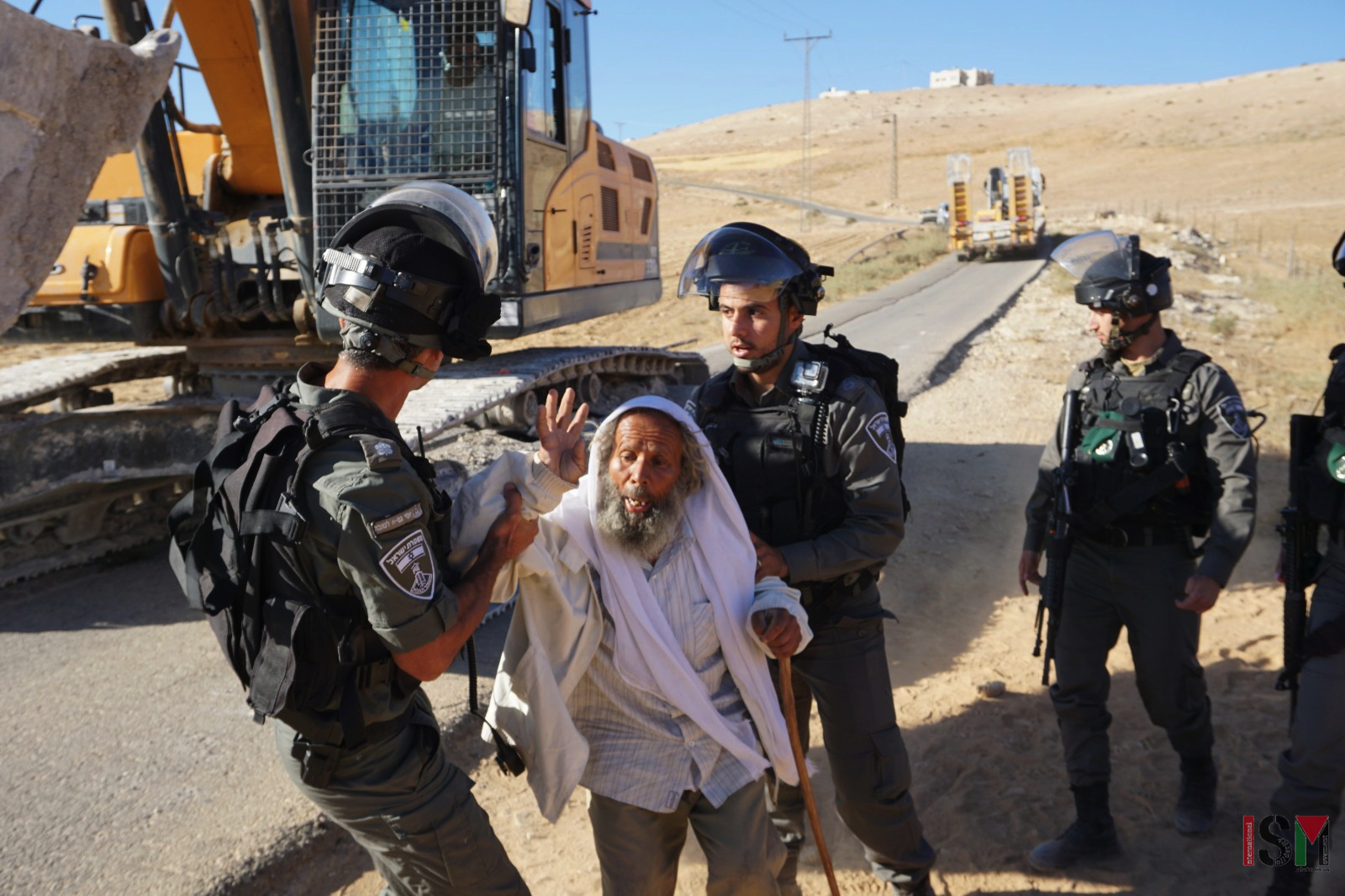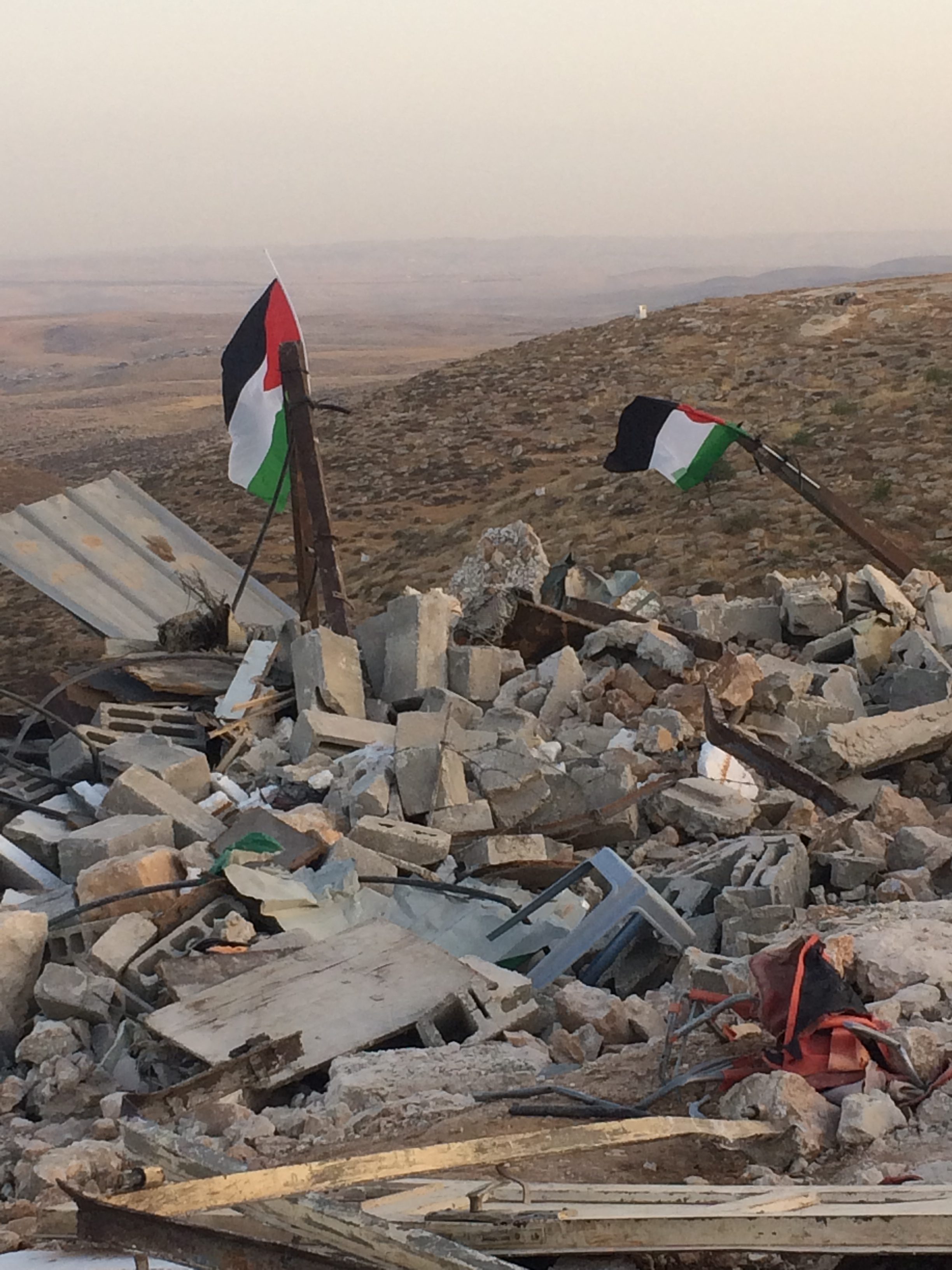Tag: Ethnic Cleansing
-
Livelihoods destroyed in two days of demolitions in South Hebron Hills
July 4 | International Solidarity Movement | South Hebron Hills, occupied Palestine The South Hebron Hills have faced two consecutive days of demolitions starting early yesterday morning, with bulldozers destroying water wells and uprooting over 500 trees in two villages. An elderly Palestinian activist from Um al-Khair was also hospitalised yesterday after being violently…
-
Five days after demolition: Picking up the pieces
June 21, 2019 | International Solidarity Movement | South Hebron Hills, occupied Palestine Palestinian flags fluttered over the rubble of Mohammad al Dababsh home in the South Hebron Hills yesterday as local activists helped the family put up a temporary shelter. Pots and pans lay scattered amongst bricks, metal and dust – the only remnants…
-
South Hebron Hills: Settlers wielding sticks launch night attack on Palestinian home
June 17, 2019 | International Solidarity Movement | South Hebron Hills, occupied Palestine Settlers bearing sticks from the notorious Havat Maon illegal outpost tried to attack a Palestinian home two nights ago in the village of At-Tuwani, South Hebron Hills – the latest in a stream of attacks against the same home. The Zionist attackers…


